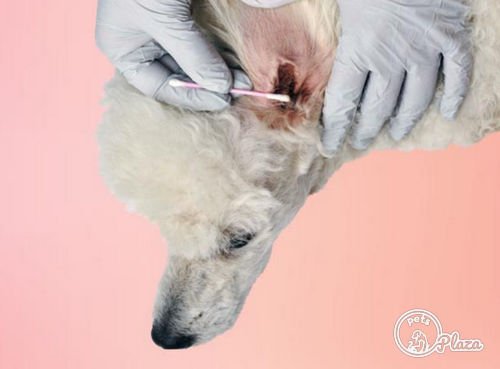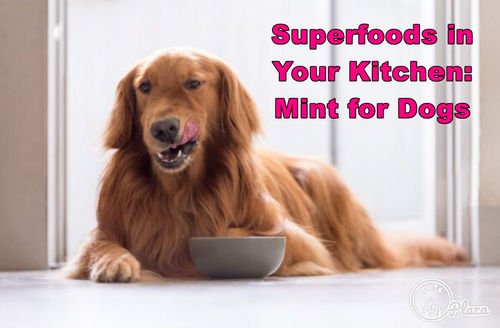Does your canine experience the ill effects of irritated skin, expanding or overstated slobbering?
- There are numerous basic conditions for such side effects, yet quite possibly the most widely recognized infections in dogs may be the guilty party.
- While you’re hanging tight for your vet arrangement, read on to get familiar with spotting and handling yeast infection in dogs.

What is a yeast infection in dogs?
- Yeast is a growth that lives on the skin and inside the gut of your canine without causing any damage, more often than not.
- Nonetheless, there are sure triggers that when initiated can prompt an over-populace of yeast.
- The body will at that point attempt to get the yeast populace back to its typical levels which causes the indications of yeast infection in dogs to erupt.
Where Do Dogs Develop Yeast Infections?
- Dogs are well on the way to grow either yeast dermatitis or yeast otitis however a few dogs may even have the two sorts of yeast infections simultaneously.
- Dermatitis is an infection and irritation of the skin and otitis is an infection and aggravation of the ears.
- The two sorts of yeast infections can cause inconvenience and tingling and proprietors generally notice the indications immediately in the event that they realize what to search for.
- Yeast otitis for the most part causes redness inside the ear, scaling of the ear fold or pinna, head shaking, scratching at the ear, face scouring, and a scent.
- Yeast dermatitis can happen anyplace on the skin of a canine yet is generally normal in the armpits, feet, and any skin folds.
- Redness, scaling or skin chipping, tingling, and smell are most regularly seen on these pieces of the body in the event that they are holding a yeast infection.
What are the side effects of yeast infection in dogs:
There are a couple of indications that your canine may be battling with yeast infection. Here are the most widely recognized indications:
1. Scratching the skin
- Normally the principal sign is your canine scratching, gnawing and gnawing at skin. Head shaking may likewise be a marker that the canine is attempting to mitigate their distress.
- Canine ear yeast infection is incredibly normal, so if your canine keeps their head shifted this may be one of the causes. The feet and between the digits of the paws are likewise normally influenced.
2. Hair loss
Related with yeast infection in dogs is loss of hair, which generally follows the irritation in the influenced zone.
3. Change in skin tone
- Yeast infection in dogs shows itself outwardly too, so watch out for your canine’s jacket for any pink or red territories on the skin.
- This may likewise be joined by expanding and the spot may be warm to contact too.
- In the event that the infection has gotten ongoing, and been available in your canine causing skin illness for some time, you may likewise see obscuring of the skin (called hyperpigmentation).
4. Smell
There is a specific fragrance connected to yeast infection in dogs. As the infection advances you may see an alternate smell to the typical one radiating from your canine.
5. Licking
- In the event that your canine beginnings to ceaselessly lick an influenced region of their skin, this may be their method of adapting to the irritation welcomed on by a yeast infection.
- Focus on some other endeavors they make to control irritation, for example, hurrying along the floor or scouring toward a divider or household item.
- These indications happen most generally in yeast infection in dogs, however they may likewise highlight an alternate or more genuine condition.
- At whatever point you notice any or the entirety of the side effects above, ensure you have your canine checked with a vet.
How is a Yeast Infection Diagnosed?
- Your veterinarian will most regularly determine your canine to have a yeast infection subsequent to gathering an example on a q-tip from your canine’s ear or by squeezing some tape or a magnifying lens slide onto the influenced skin.
- This example will at that point be stained in the research facility to feature the yeast so it very well may be recognized under the magnifying instrument.
- Yeast appears to be unique from microbes and requires various kinds of treatment.
- Along these lines, it is significant for your veterinarian to recognize the two sorts of infections. A few dogs may create both bacterial and yeast infections simultaneously.
Medicines for yeast infection in dogs
- There are a couple of things you can do to help your canine on the off chance that it has a yeast infection.
- Large numbers of these cures are frequently utilized close by solution treatments suggested by your veterinarian yet some may assist with fighting a gentle yeast infection completely all alone.
Give your puppy a decent shower
- Try not to focus on those directions about eliminating the cleanser rapidly with the goal that the solid oils are not taken from your canine’s skin.
- You need to eliminate the waxy development and the thick covering of yeast that is pestering your canine.
- In the wake of wetting your canine down, put a decent amount of cleanser on them, rub it in, and afterward leave it for around 10 minutes.
- This is quite a while, so you truly need to check your clock to ensure it is on there adequately long.
- Benzoyl peroxide cleanser is the most ideal decision to eliminate the entirety of the waxy material developed on the skin and where it counts into the pores.
- Since certain individuals get rashes and bothersome skin from washing dogs with this issue, I think it is significant that you utilize elastic gloves.
Apply apple juice vinegar to his skin
- Subsequent to eliminating the vast majority of the wax and yeast with the benzoyl peroxide cleanser, use vinegar to execute a large portion of what is left.
- White vinegar will work alright, however I use apple juice vinegar since it is acidic and furthermore makes them recuperate properties not found in standard vinegar.
- Blend it in with an equivalent measure of water, splash it on to his entire body, and afterward let it get without flushing it dry.
- (In the event that your canine as of now has scratches on his body, you should dodge those territories since this stings, even weakened.
Beta-glucans
- These polysaccharides are found in the cell dividers of yeast, mushrooms, and cereal grains.
- In the event that they are bioactive, they can help give your canine’s safe framework a little assistance.
- Since the insusceptible framework is somewhat answerable for irritation, beta-glucans can help support dogs that are inclined to creating yeast infections.
- Beta-glucans can be found in pet items like Imuquin® and Zenapet Dog Immune Support.
Ear cleaners with drying specialists
- Assuming your canine has yeast otitis, an ear cleaner intended for dogs with a drying specialist can assist with keeping your canine’s ears sans yeast.
- This cleaner can be utilized after showers and when your canine swims to help decline the dampness in the ears.
- Keep away from allergens – If your canine is delicate to specific food varieties or things in the climate, maintaining a strategic distance from them can help decline the seriousness and probability of a yeast infection.
Degreasing shampoos
- Shampoos with degreasers and surprisingly straightforward dish cleanser can help take the unreasonable oils from a canine’s skin.
- These shampoos ought not be utilized consistently except if trained by a veterinarian yet can help a few dogs that are sleek and inclined to yeast infections.
- Numerous different cures are frequently promoted as being protected choices for treating yeast infections in dogs however practically zero logical proof is accessible to help their utilization.



